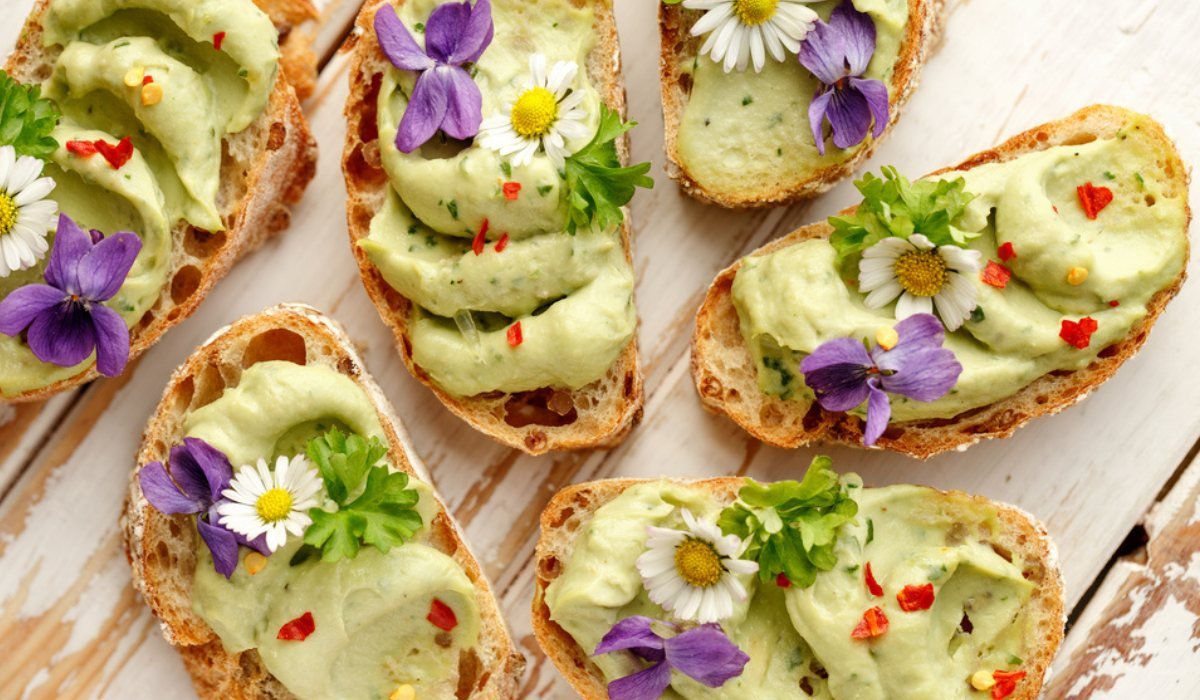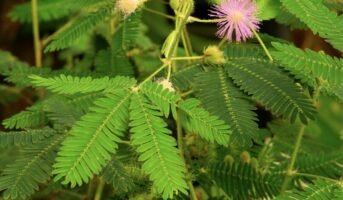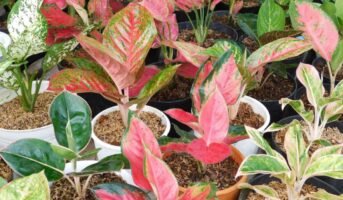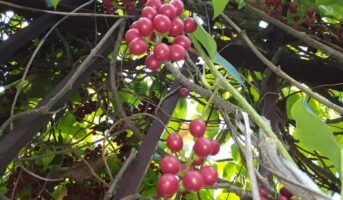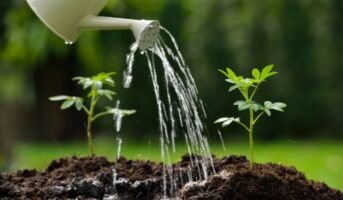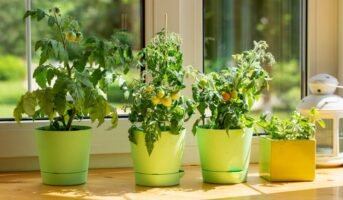Flowers are a beauty to admire, smell and feel. There are many types of flowers, and one such category is edible flowers. Flowers that are not only beautiful but can be eaten safely. Mainly these types of flowers are used in cooking, as aromatic oil sources, as herbs, and for health purposes. They carry numerous benefits. It’s easy to grow them in your garden and give the balcony or garden a new outlook.
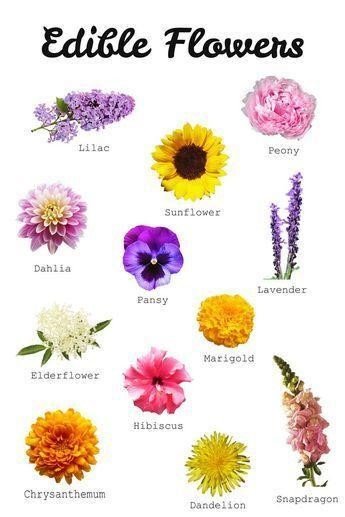
Source: Pinterest
see also all about Edible Roots
Flowers are an essential part of life, and edible flowers are an important part of the food we eat. Some flowers are eaten as food, while some can be used to give a unique aroma, color, or taste when sprinkled on the dish. Some of the most used edible flowers are
- Dandelions – honey flavor, can be eaten raw, used in salads, brewed into tea, wine, etc.
- Hibiscus – acidic flavor, commonly found the very beautiful flower, very good for hair, used in beauty products, medicinal value, used for color
- Lavender- sweet flavor, used in many dishes and desserts for flavor, medicinal value, stress relieving smell
- Pansy – the flavor of mint used in drinks, salads, etc.
- Rose – most beautiful of all, used in many dishes, desserts, and drinks, used in deos and perfumes for enchanting smell, used in many beauty products for its color and scent
- Sage Flower – sweet flavor, looks good when sprinkled on food, commonly used in desserts, popsicles, etc.
- Honeysuckle – Sweet honey flavor, full of nectar, used in drinks, lemonades, tea syrups, etc.
- Nasturtium – pepper and spicy flavor, used in many dishes, used in cakes and pastries, salad dressing
- Chamomile – soothing chamomile scent, used in many drinks, tea, etc., medicinal value, stress reliever
- Marigolds – citrus flavor, used in salads and used for color
know about: gazania Rigens
Some edible flowers that you can grow in your garden
Edible flowers must be grown organically. You should use flowers only from the location where you know that no herbicides or pesticides have been sprayed. Many flowers from nurseries are treated and sprayed with chemicals that are not fit for consumption. Then growing your edible flowers from seed in your garden is the safest option. Here is a list of a few edible flowers and the appropriate conditions for their growth:
-
Begonia
All the flowers of tuberous begonias and wax begonias are edible for eating. Tuberous begonias are considered superior for eating, while wax begonias can taste slightly bitter. They have a tart, lemon-lime flavor with a crisp texture. The whole begonia flower can be added to salads, or its petals can be used as a garnish. Keep the soil of your begonia slightly moist but not soggy. It needs full or partial sun exposure. And the ground needs to be average, wet, and well-drained.
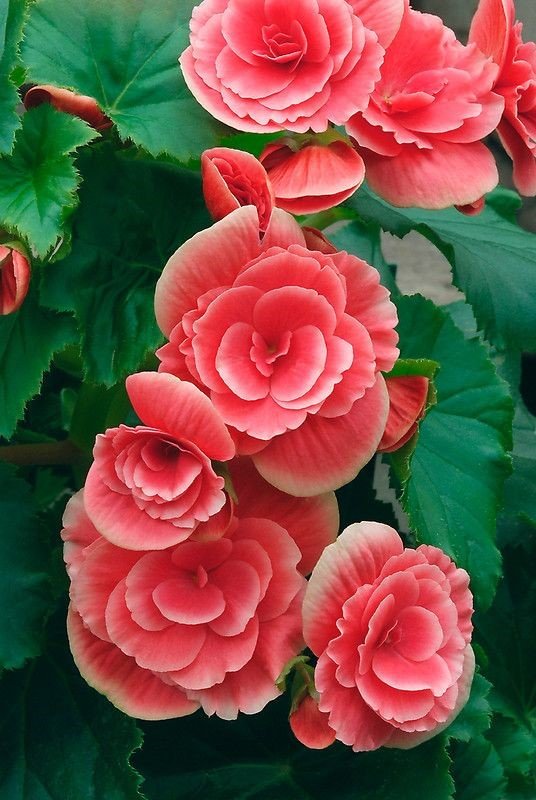
Source: Pinterest
-
Bee balm
It is a perennial plant with spiky, tubular flowers. Both the leaves and flowers of bee balm are edible. It can be used for homemade butter, tea, salad garnish, and as an infusion to ice creams. It needs full to partial sun exposure. The soil in the pot needs to be rich, moist, and well-drained.
-
Borage
It is an annual plant with deep blue and star-shaped flowers. Only the petals are eaten, and the hairy inner part needs to be removed with fingertips. These flowers have a refreshing cucumber-like flavor and are a great addition to soups, salads, and desserts. They need full to partial sun exposure. The soil needs to be average with dry to medium moisture and well-drained.
-
Calendula
Calendula, also known as pot flowers, are annual plants with daisy-like flowers. Only the petals of Calendula are consumed. Their flavor depends on their variety, like spicy, tangy, peppery, or bitter. They can also be used in homemade butter, rice dishes, and salad garnishes. It can also be used in the yellow color in words like saffron but on an inexpensive side. It requires complete to partial sun exposure. The soil in the pot needs to be average and well-drained.
-
Chamomile
Both German and roman species of chamomile are edible, but german chamomile is sweeter. Fresh or dried chamomile flowers can be fried in butter and stirred in oatmeal or other cereal. Chamomile should be planted in well-drained soil, and be sure not to overwater it. It needs dry to medium moisture soil, and sun exposure needs to be complete.
-
Chives
Both varieties (common and garlic chives) are perennial plants with edible flowers. You should harvest the flowers right after they open. The flowers should be harvested for common chives before they become dry and papery. These flowers have subtle garlic or onion flavor, and they are great for homemade butter, sauces, eggs, salads, sandwiches, etc. Chives should be given a sunny spot in the house as they require total sun exposure. Be sure to keep the soil evenly moist as the ground needs to be sandy, loamy, wet, and well-drained.
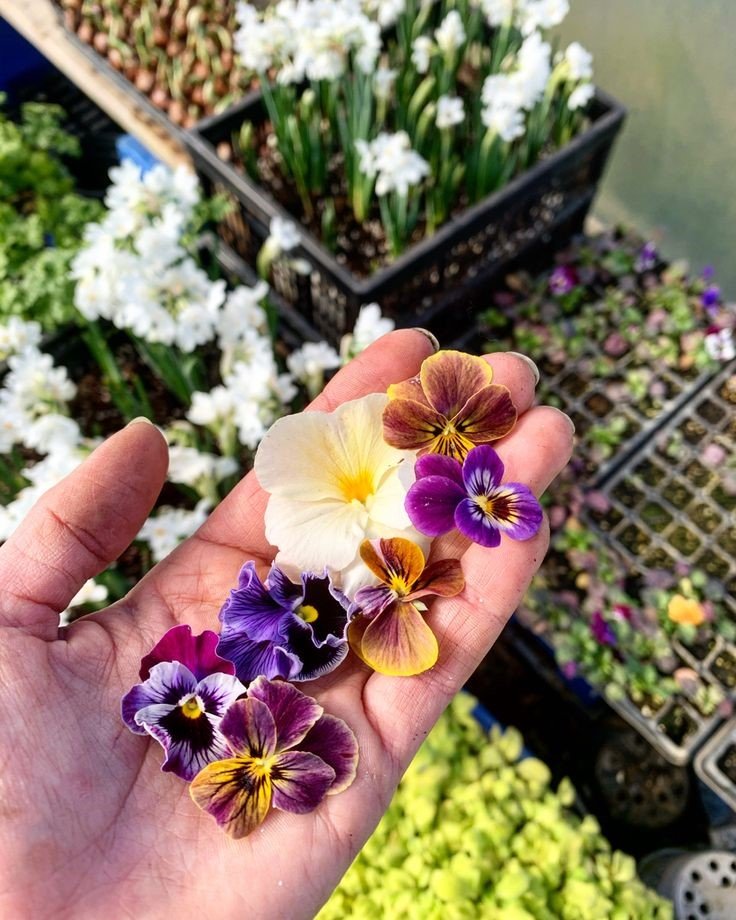
Source: Pinterest
Uses of edible flowers
-
- You can use edible flowers in a lot of food items such as drinks, juices, cocktails, sandwiches, cakes, popsicles, etc.
- You can also use them for ornamentation and to decorate your house and food.
- Here is a list of a few edible flowers and how you can use them:
- Pansy and violet flowers: These flowers make lovely decorations for salads, desserts, and more. These flowers are cooling in nature and provide a delightful dose of Vitamin C.Violas are used to help soothe a cough, sore throat, digestive disturbances, and inflammation for childhood woes. Violas also help to ease grief and relieve tension.
-
- Rose petals: Edible flowers are incomplete without the mention of a beautiful rose. Rose brings a lifting flavor to the dishes with an uplifting and even stimulant quality. Rose water and rose petals have been used for thousands of years in culinary creations, but their properties are far beyond their usefulness in cooking.
Rose water is also a toner for the face, and many parts of rose are used in beauty products as it has antioxidant properties, soothes the skin, reduces oil secretion, minimizes pores, and much more. The petals of the rose are astringent and cooling as well as offer a calming nerve action. To use it, gently pull off the petals of the base of the flower, leaving behind the rest of the flower to mature into tasty rose hips in the autumn. Then trim away the nib from the bottom of the petal and enjoy!
- Borage flowers: These starry violet flowers, when munched, are refreshing and provide a flavor reminiscent of cucumbers. Herbalists use it to calm the nerves and ease melancholy. These cheerful flowers are a lovely addition to beverages and are also used as a cooling treat during the summer heat. Just use borage fresh, add them to salads and freeze them in ice cubes!
- Calendula petals: These are little cherry-like flowers. Along with being a delightful addition to the food, these flowers are also well known for their herbal properties. The dried Calendula petals also make an excellent addition to soups and teas during winter for their hypnagogue, antiseptic, and immune-building properties. To use them, just pull the petals from the flower head and add to your salads, soups, sauces, and baked food items or use them as a bright and happy decoration on your desserts.
- Hollyhock and mallow flowers: Hollyhocks and the common little Malva that we see growing on the roadside are directly related to marshmallows that are more commonly used in herbalism. These plants have edible flowers with a lovely presence and bland flavor that is perfect for adding to foods for decoration. Just like the roots of these plants, their flowers are also soothing and cooling, helping to ease mucus membrane irritation and inflammation.
- Red Clover blossoms: These are tiny purple flowers that comprise the more prominent blooms of this herb on the roadside. Herbalists use it to help detoxify the body. The flower tips of this plant are also used to help with winter cough, even for children, and help to support women’s health.
A fun way to consume this edible flower is to carefully pull the little flowers out of the bigger blossoms and suck the sweet nectar out of the base of the flower. You can also use the flower head to make teas, add them to your food, or add them as toppings on your dishes.
- Dandelion blossoms: Dandelion offers beautiful golden flowers that are beloved by herbalists and add to the grace of your kitchen table. Herbalists most commonly use roots and leaves, but the flowers also have useful properties that help to relieve pain when taken both internally and externally. Like the dandelion plant, its flowers also benefit the liver.
- Lavender buds: Lavender is a treasured plant from the mint family. Lavender has little fragrant flower buds that are powerfully flavourful, and a little of them goes a long way. Just add a pinch of lavender to your food items such as teas, cookies, and even sauces – grind the flowers a little with your fingers and then toss them into the brew. Lavender flowers are well known to calm the nerves, and they are also used to help ease spasms and act as an antiseptic both internally and externally.

Source: Pinterest
Benefits of edible flowers
Edible flowers can be found on menus all over the world in many different styles and offer many health benefits too. Here are the potential health benefits of some edible flowers:
-
Hibiscus
Hibiscus plants produce large and ornate blossoms and usually grow in tropical to subtropical climates around the world. Hibiscus subdariffa is the most popular edible variety of the Hibiscus species. Hibiscus is grown for ornamental purposes as well as for its culinary and medicinal applications. It can be eaten straight from the plant and used for tea, relishes, jams or salads. Its tea is bright with a somewhat sour flavor and is served hot and refreshing on a hot summer day.
-
Dandelion
Dandelions are stubborn garden weeds. But, they seem to double as a highly nutritious edible flower. Dandelions have powerful antioxidant properties. Every part of this plant can be eaten, including its roots, leaves, stem, flowers, etc. They can be eaten raw, either alone or in a salad, or maybe breaded and fried, or can be used to make jelly and wine. Its roots are commonly used for making tea, while its greens are used in salads and as toppings.
-
Lavender
Lavender is a woody, floral herb having violet flowers that are small but plentiful. It is best known for its distinctive fragrance and calming effect. The combination of the color and aroma of lavender makes it a desirable product for use in many food items or even as ornamental decorations. Lavender can be paired well with various ingredients, including sweet, savory, citrus, berries, rosemary, thyme, etc.
-
Rose
There are over 150 species of rose of different sizes and colors. Roses are edible, but not all of them taste the same. Choose the rose based on its smell; if it smells pleasant, it will taste good too. Rose petals can be eaten raw, mixed with various fruits or salads, or dried and added to granola or herbs. Fresh rose petals can also be muddled and added to liquid beverages to make rose-infused drinks, jams, and jellies. Certain compounds present in roses may help in reducing anxiety and promote relaxation.
-
Pansy
Pansies are equally pleasant to eat as they look. Pansies exist in many colors, but hues of purple, yellow and blue are most familiar, with a dark area in the center resembling an ink stain. They have a mild, fresh, and lightly floral flavor, which can vary with their type. They can be used as excellent decorative pieces on cakes, cookies, etc. Pansies can also be chopped and added to salads for a pop of color. Pansies are a rich source of compounds with antioxidant and anti-inflammatory properties.
-
Chamomile
It is a floral herb used in cooking and as a traditional medicine for thousands of years. Chamomile helps to reduce anxiety and improve sleep quality. Chamomile resembles daisies but is much smaller than them. It adds a slightly sweet and earthy flavor to the food. In most recipes, it needs to be heated in a liquid to release its flavors and bioactive compounds. It is often used in its dried form but can also be used fresh. It is often consumed as chamomile tea, but its blossoms can make syrups or infusions for baked food, smoothies, or desserts.
Ideas to use edible flowers in our day-to-day cooking
Edible flowers can be used in many of our daily cooking. Many of them give a unique flavor and texture and enhance the presentation of our dishes on special occasions.

Source: Pinterest
Example-
- As Ice Popsicles: Add the flower petals directly or crush them in the ice popsicle mixture. Freeze the mixture and serve them directly
- Flavored oil: Some edible flowers are used to extract oil. It can be added to Jams and pickles to give a new flavor.
- Crystalised Flowers: Mix egg whites with superfine granulated sugar and paint on rose petals or any edible flower. Let dry. Use these to beautify cake and desserts.
- Garnish Flowers: Crush dried flowers and use them to garnish the ice creams, cakes, desserts, etc. Nasturtium and pansies flowers have a peppery and spicy flavor, so they go well with salad dressing.
After harvesting them from your garden, place them on a kitchen paper towel to absorb the water and place them in a sealed container. Use them right away or store them in the refrigerator for future use.
Risks associated with edible flowers
Nowadays, it has become a trend and fashion to eat raw flowers. We can easily see such instances in restaurants and parties. But there are certain risks associated with these edible flowers. Significant threats can be –
- Insecticides used during cultivation or plantation
- Certain flowers contain harmful bacteria
- Chemical compounds like insect repellents
We need to be very attentive with our selection – the methods we use for gardening, storage of flowers, preservation techniques, etc.
Some flowers can only be consumed in small amounts, like Apple flowers (which contain cyanide) and Johnny Jump-up (which contains saponins). Borage and daylily flowers can cause blood thinning sickness. Many nontoxic edible flowers, when consumed in large amounts, can cause allergies.
FAQs
Can we eat all edible flowers?
No
How to increase the shelf life of these flowers?
In an airtight plastic or glass container, line the bottom with a damp paper towel and lay the harvested flowers on top.
What is the most used edible flower?
Rose and Hibiscus
Which part of the flower is mostly edible?
Petals
What is the standard way to consume edible flowers?
Edible flowers are commonly consumed fresh or in their dried form.
Housing News Desk is the news desk of leading online real estate portal, Housing.com. Housing News Desk focuses on a variety of topics such as real estate laws, taxes, current news, property trends, home loans, rentals, décor, green homes, home improvement, etc. The main objective of the news desk, is to cover the real estate sector from the perspective of providing information that is useful to the end-user.
Facebook: https://www.facebook.com/housing.com/
Twitter: https://twitter.com/Housing
Email: [email protected]
